Originally Posted At: https://breakingmuscle.com/feed/rss
Many lifters want to follow programs that deliver results without wasting time in the gym. One of the most effective ways to achieve that is to train with exercises that work multiple muscles at once. Many exercises can the bill and the simple chin-up is at the top of the list.
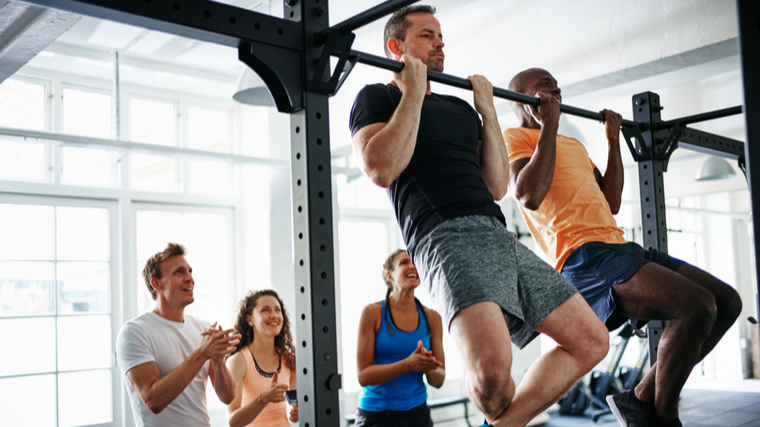
This bodyweight basic provides an excellent stimulus to build strength and muscle in your back, biceps, and forearms. Whether you’re working toward your first pull-up or just want to build a more muscular upper body, the chin-up can offer serious gains to any lifter who masters it. Here’s how to get there.
- How to Do the Chin-Up
- Chin-Up Mistakes to Avoid
- Benefits of the Chin-Up
- Muscles Worked by the Chin-Up
- Who Should Do the Chin-Up
- How to Program the Chin-Up
- Chin-Up Variations
- Chin-Up Alternatives
- Frequently Asked Questions
How to Do the Chin-Up
Step 1 — Find Your Perfect Grip

Stand directly under a pull-up bar with your arms at your sides and your thumbs pointing forward. Raise your arms straight overhead as naturally as possible. Once your hands are in line with the bar, supinate your hands (turn them palms-up) and grip the bar. This is your individualized, ideal grip-width that should suit your arm length and shoulder mobility.
Pull your shoulder blades back and lift your feet off the ground. Cross one foot over the other to engage your abs and prevent your legs from swaying. Lower your body to a complete dead hang with your weight supported by straight arms. Your head should be between your biceps, and your elbows should be fully extended.
Form Tip: Raising your arms overhead and supinating your hands is a useful and reasonably accurate guideline to set your grip. However, you may need to fine-tune your grip width slightly closer or wider if keeping your arms overhead is uncomfortable.
Step 2 — Pull Your Chin to the Bar
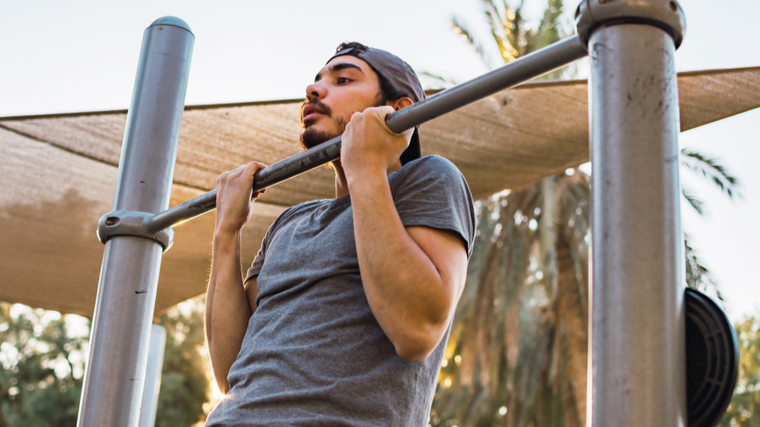
Take a short breath while keeping your chest tall. Externally rotate your shoulders to ensure your shoulder blades are pulled back. Pull your body towards the bar by squeezing your grip and driving your elbows back and down.
As you pull yourself up, your biceps and back musculature will be working overtime, so think about these muscles contracting as you lift. This has been shown to help improve exercise technique and muscle growth. (1) Exhale slowly as you pull yourself up and stop once your chin is at the top of the bar. Your arms should be fully contracted with your elbows near your ribs.
Form Tip: At the top of each rep, hold yourself in an isometric contraction for one to two seconds. If you can see a mirror without turning your head, take a glance to see if your elbows are pointed straight down to the ground or angled in towards your body’s centerline. If they’re pointed straight down, your shoulders are likely externally rotated, which is ideal for joint health and muscle recruitment. If they’re angled in, your shoulders are more internally rotated, and your joints are being strained.
Step 3 — Lower Under Control

Maintain a strong position through your core to mitigate any swaying. Think about your muscles lengthening as you descend until both your biceps and back musculature are fully stretched at the bottom position. Don’t allow your body to swing in the dead hang. Squeeze the bar tightly and flex your abs to keep control.
Form Tip: Movements like the chin-up should be about quality over quantity. If needed, allow yourself a few seconds to reset between each rep so that you are performing them with a high rate of work. Five perfect reps are a better goal than 10 sloppy reps.
Chin-Up Mistakes to Avoid
The chin-up can be a simple bodyweight exercise, but there are a few technical errors to avoid if you want to build muscle, get stronger, and be as efficient as possible when performing each rep.
Excessive Swinging
Just like its arguably more popular sibling, the pull-up chin-ups require you to stabilize your entire body to minimize stress on the shoulder joint. However, there is a slight difference in the outcome of excessively swinging in the chin-up.
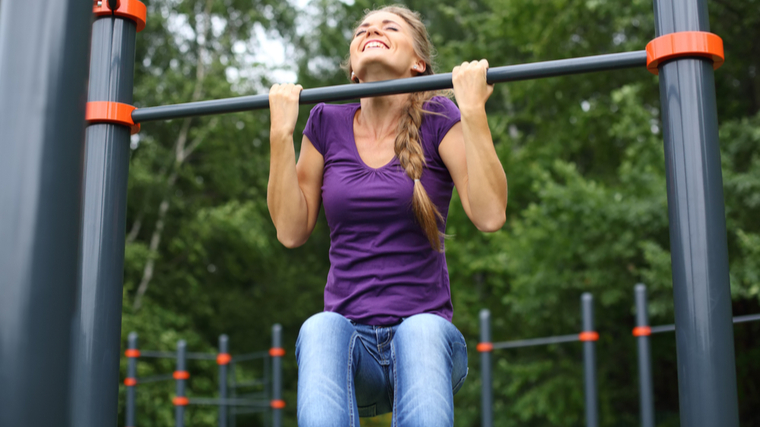
CrossFit has popularized kipping pull-ups, which use significant total-body swinging to complete very high-rep sets. Still, any swinging during chin-ups leaves the shoulders internally rotated, which increases strain on the shoulder and elbow joints and drastically reduces any muscular tension in the back muscles.
Whether you are trying to build muscle or strength, allowing any swinging is not going to get you closer to your goals.
Avoid It: Focus on a one to two-second pause at the top of each rep and make any necessary adjustments to keep your shoulders externally rotated — get your chest up and shoulder blades back.
Not Using a Full Range of Motion
Some gym-goers fall into the half-rep trap with chin-ups, performing a minimal range of motion from the top of the rep to almost halfway down and back up again.
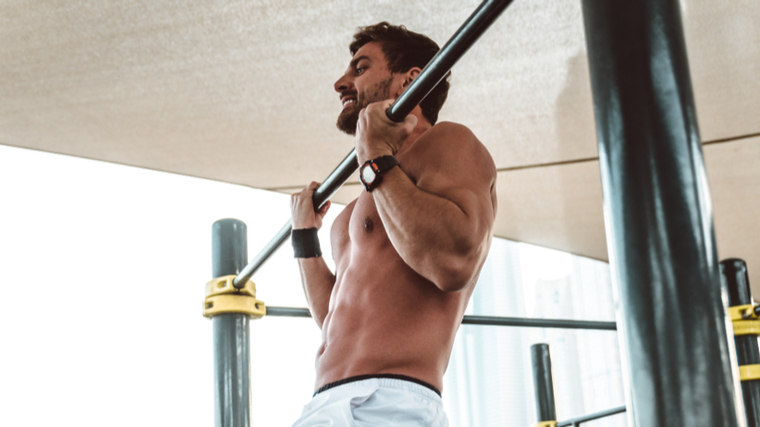
This rushed approach is extremely ineffective. This short range of motion will reduce the time under tension of the working muscles, which means each rep provides less training stimulus, and you’re preventing yourself from getting stronger or building muscle.
Avoid it: Always remember to focus on quality over quantity. Don’t fall into ego lifting, and don’t be concerned with how many reps another lifter may be performing.
Benefits of the Chin-Up
When executed correctly, the chin-up can be one of the most complete upper-body exercises with minimal equipment.
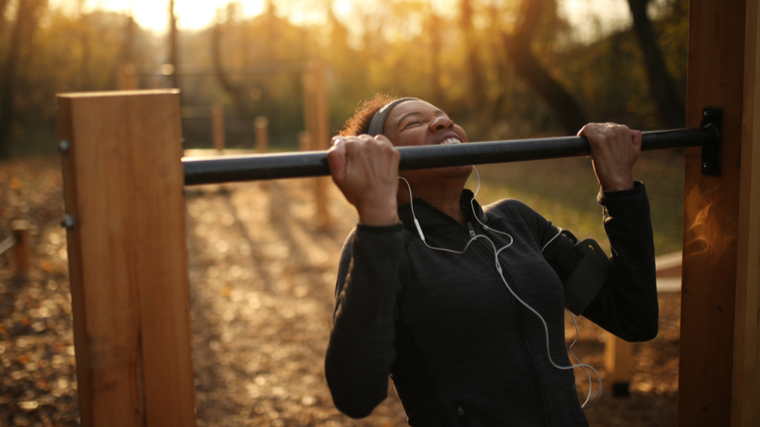
It can increase strength and muscle development in your back, chest, and shoulders; support postural development, and improve shoulder mobility.
More Muscle for Your Biceps and Forearms
Using a supinated grip changes muscle activation and emphasis. This grip places a higher load on the biceps while also recruiting the forearm muscles. (2) Chin-ups allow lifters to train their biceps using relatively heavier loads (their body weight) compared to many other biceps exercises, while the back muscles act secondarily to assist the movement. This makes it an ideal exercise choice for the overall development of the forearms and biceps and for building grip strength.
Functional Hypertrophy and Strength
The functional nature of the chin-up means by becoming better at it; you will also improve your general physical performance. (3) This can easily translate to several contact sports like football, rugby, combat sports, rock climbing, or even swimming. Functional training can also help in your day-to-day lifestyle. A strong back, shoulders, and arms will benefit everything from carrying groceries to carrying kids.
Easy to Progressively Overload
To get stronger and build muscle, you need to provide some progressive overload — consistently more challenging weight or reps. With the chin-up, all you need is your body weight. Not a stack of plates, just you. When you can achieve 12 controlled reps for three or four sets, you have mastered the bodyweight chin-up.
Lifters can take many months or years depending on their training plan, to get there. At that point, you can hold a one or two-kilogram (two or five-pound) dumbbell between your legs and work your way back up to sets of 12 reps. Rinse and repeat this process, taking small jumps in weight each time as you say hello to your new gains.
Muscles Worked by the Chin-Up
The chin-up is an upper body exercise that works most of the muscles in your upper body. The biceps are worked significantly, while the back and shoulders contribute to the movement.

Biceps
The biceps are composed of two heads — the long head on the outside of the upper arm and the short head on the inner portion. Both parts of the muscle originate at the scapulae (shoulder blades) and attach near the elbow, with the long head also crossing the shoulder joint. The biceps are significantly recruited during the chin-up because the supinated (underhand) grip places the arm at a mechanical disadvantage.
Forearms
The forearms, including the flexors on the palm side and the extensors on the top side, work to support your body weight during chin-ups. The flexors, in particular, are heavily activated when pulling towards the top portion of each repetition.
Latissimus Dorsi
The lats are the largest muscles on the back. They attach to the upper arm and the spine near the lower back. They work to bring the arm closer to the body’s centerline from above the head as well as from out to the side. The arm goes through both of these motions during a chin-up, which is why it’s an effective way to activate the lats.
Upper Back
The upper back includes several similar-functioning muscles such as the trapezius, rhomboids, and rear deltoids. Each work to control various movements of the scapulae (shoulder blades) and to support the shoulder joints under muscular stress, particularly in the bottom portion of the chin-up.
Who Should Do the Chin-Up
To develop a strong and muscular back, most lifters over-focus on the pull-up. However, chin-ups can be more of a fundamental movement and more effective for gaining in size and strength.
The chin-up is especially useful due to its versatility and carries over to many pulling movements in sports and daily activities.
Training for Bodyweight Strength
To get stronger, especially with any bodyweight exercise, you must treat strength as a skill. So if you want to improve your chin-ups, you need to get better at performing the exercise itself. Reinforcing perfect technique is all about performing rep after rep while emphasizing quality over quantity.
Training for Functional Hypertrophy
Functional hypertrophy is a strategic and balanced approach to muscle growth that also improves physical performance. The long range of motion and recruitment of multiple muscles makes it a highly effective movement. Working the scapular muscles through a strong contraction and deep stretched position also builds shoulder joint health.
How to Program the Chin-Up
The chin-up can be programmed with a variety of sets and reps. Performing the exercise at the beginning of your workouts, while you are full of energy, can help to build strength and ensure quality technique.
Here are some effective ways to start implementing chin-ups into your workouts, depending on your training goal and current abilities.
Added Weight, Low Repetition
To build upper body strength with the chin-up, complete four to six sets in the three to six rep range. Avoid muscular failure, which could compromise technique, by keeping at least two reps left “in the tank”. Because this is a relatively advanced option, only add weight when you can successfully perform multiple sets of moderate to high-reps with your bodyweight.
Bodyweight-Only, Moderate Repetition
To ensure growth in the working muscles, work with three to four sets in the six to 12 rep range. This will increase overall training volume, which is beneficial for building muscle. (4) If needed, use assistance from resistance bands or a pull-up machine to achieve the target rep range.
Modified Cluster Sets
Cluster sets are a specialized training method that can allow you to build strength by performing more total repetitions without muscular failure. It’s more commonly programmed for weight training exercises using heavy loads and low reps, but it can be applied to challenging bodyweight movements like chin-ups.
For example, if you can only perform two repetitions, you would perform cluster sets or “mini-sets” of one rep. Perform one rep, rest for 15 to 30 seconds, perform another rep, rest for 15 to 30 seconds, and perform a final rep. That entire series is one set. Take two minutes rest before repeating two more full sets.
Because one set of three cluster reps is comparable to performing three reps in a single set, you can get stronger and increase total working volume, which can lead to more muscle. Adapt the method depending on the total number of reps you can currently perform. For example, if you can do five reps of chin-ups, use three clusters of three reps (nine total reps per set) for three sets.
Chin-Up Variations
There are a few simple variations for the chin-up that you can rotate into your phases of programming even once you have mastered the execution of this exercise.
Weighted Chin-Up
The weighted chin-up is the next step in advancing your development. You can use a weight vest, a weighted belt, or you can just place a single dumbbell between your legs.
Just when you think you may have reached your growth potential, add in these bad boys and you will start to make even more impressive gains in size and strength.
Semi-Supinated Chin-Up
This variation of the chin-up adjusts your grip, ever so slightly, by rotating your thumbs roughly 45-degrees towards your face. Your hands should be angled with your pinkies slightly closer to each other and your thumbs slightly farther apart.
This grip can a smoother pulling motion because strain on the wrist and elbow joints is reduced and muscular stress on the forearm muscles is increased. This allows for a more powerful and more comfortable movement for the biceps, scapulae, and back muscles.
Sternum Chin-Up
This advanced exercise variation has a greater emphasis on your scapulae. As you pull yourself up, aim to open your chest as much as possible and finish with the middle of your chest at the bar instead of your chin.
Essentially, you will be trying to overarch through your thoracic region and adjusting your body’s leverage to better allow the force of gravity to work the scapulae and achieve a greater workload through the middle of your back.
Chin-Up Alternatives
Maybe the variations above aren’t what you need or or maybe you don’t even have a bar to use at home or in the gym. Either way, there are a few alternatives that can still help you strengthen the pulling muscles involved with a chin-up.
Underhand Pulldown
The lat pulldown machine can be a great asset in mirroring the pulling motion of the chin-up. This should be used as a primary exercise if you are unable to perform bodyweight chin-ups.
Even once you have mastered the chin-up, this exercise still has its place by allowing you to fully fatigue your back, biceps, and forearms with a variety of weights and rep ranges.
Single-Arm Kneeling Pulldown
This alternative uses the cable pulley to take the muscles through a long range of motion by kneeling on the ground, setting the pulley at its highest point, and performing the movement with a significant stretch in one side at a time.
This single arm alternative can help you in strengthening any muscular imbalances that can occur when only performing bilateral movements. A key tip for this exercise is to always start each set with your non-dominant side first so you can put as much effort as possible in developing the lagging muscles.
FAQs
What is the difference between the pull-up and chin-up?
The key point of difference between these two exercises is the hand grip used on the bar. During a pull-up, your hands are pronated (palms facing down) and your hands are supinated (palms facing up) during a chin-up.
This simple different increases the recruitment of the biceps during chin-ups, while pull-ups more predominantly activate the back muscles, with the biceps in a more secondary role with limited contribution due to leverages.
How many times per week should I perform pull-ups?
If your priority is to get stronger and build muscle, start performing chin-ups twice per week with at least 48 to 72 hours rest in between each session. (5) This will give all muscles recruited enough time to recover and be ready to tackle your next session with maximal effort.
You can however, frequently perform low-rep sets of bodyweight chin-ups as a way to practice your technique. This works well during your general warm-up for upper body workouts or workouts where your back is utilized in other exercises, such as the deadlift. Performing three to four reps will be enough to assist in mobilizing and activating the muscles that are going to be worked in that session, while also preventing any significant fatigue from occurring in those muscles.
Keep Your Chin Up
The chin-up doesn’t deserve to be stuck in second-fiddle status behind the pull-up. Chin-ups are a bodyweight staple that delivers upper body functional strength and muscular coordination. And bigger biceps are a nice perk, too. It’s time to get on the bar, flip your grip, and start chinning.
References
- Schoenfeld, Brad J. PhD, CSCS, FNSCA; Contreras, Bret MA, CSCS Attentional Focus for Maximizing Muscle Development, Strength and Conditioning Journal: February 2016 – Volume 38 – Issue 1 – p 27-29 doi: 10.1519/SSC.0000000000000190
-
Youdas, J. W., Amundson, C. L., Cicero, K. S., Hahn, J. J., Harezlak, D. T., & Hollman, J. H. (2010). Surface electromyographic activation patterns and elbow joint motion during a pull-up, chin-up, or perfect-pullup
 rotational exercise. Journal of strength and conditioning research, 24(12), 3404–3414. https://doi.org/10.1519/JSC.0b013e3181f1598c
rotational exercise. Journal of strength and conditioning research, 24(12), 3404–3414. https://doi.org/10.1519/JSC.0b013e3181f1598c - Harrison, Jeffrey. (2010). Bodyweight Training: A Return To Basics. Strength & Conditioning Journal. 32. 52-55. 10.1519/SSC.0b013e3181d5575c.
- Schoenfeld BJ, Contreras B, Krieger J, et al. Resistance Training Volume Enhances Muscle Hypertrophy but Not Strength in Trained Men. Med Sci Sports Exerc. 2019;51(1):94-103. doi:10.1249/MSS.0000000000001764
- Schoenfeld, B. J., Ogborn, D., & Krieger, J. W. (2016). Effects of Resistance Training Frequency on Measures of Muscle Hypertrophy: A Systematic Review and Meta-Analysis. Sports medicine (Auckland, N.Z.), 46(11), 1689–1697. https://doi.org/10.1007/s40279-016-0543-8
Featured Image: Drazen Zigic / Shutterstock
The post How to Do the Chin-Up for Bigger Arms and a Stronger Back appeared first on Breaking Muscle.




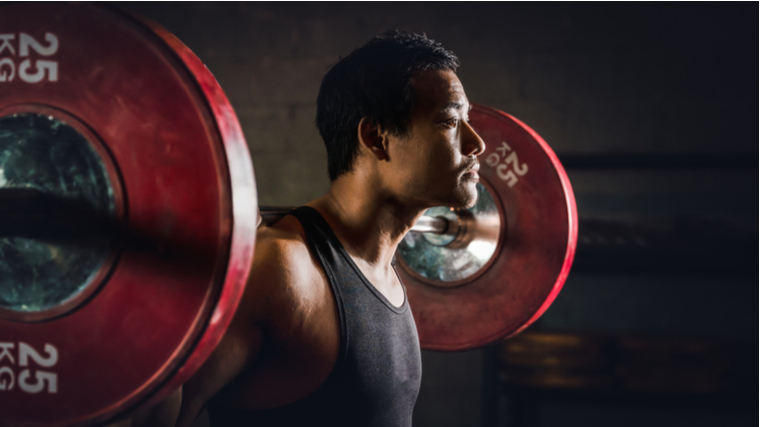
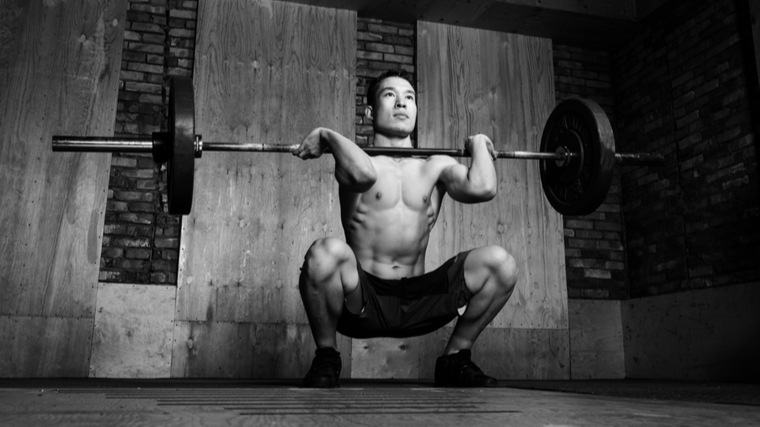
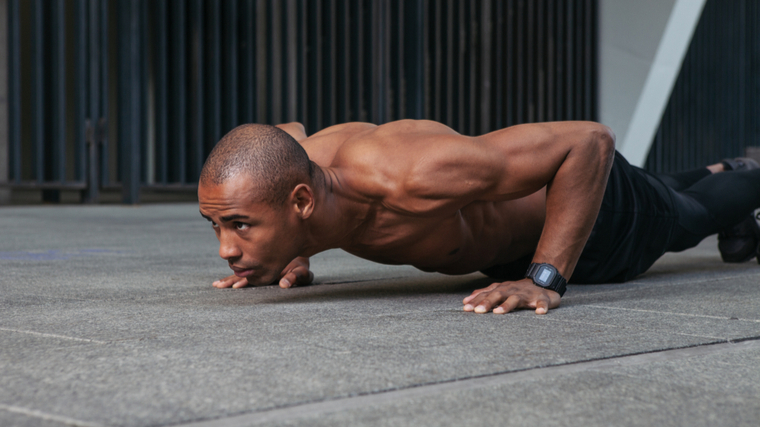


 Most people probably assume that the problem with a sedentary lifestyle is that you aren’t moving. (Yes, I see the tautology there.) Every minute, every hour, spent sitting at your desk or lounging on the couch is time you aren’t walking, lifting heavy things, or
Most people probably assume that the problem with a sedentary lifestyle is that you aren’t moving. (Yes, I see the tautology there.) Every minute, every hour, spent sitting at your desk or lounging on the couch is time you aren’t walking, lifting heavy things, or 
 (@max.boudreault23)
(@max.boudreault23) For now classes are 6pm and 640pm at 2840 Wildwood st in the Boise Cloggers studio.
Book your class NOW!
click this ==>
For now classes are 6pm and 640pm at 2840 Wildwood st in the Boise Cloggers studio.
Book your class NOW!
click this ==>








